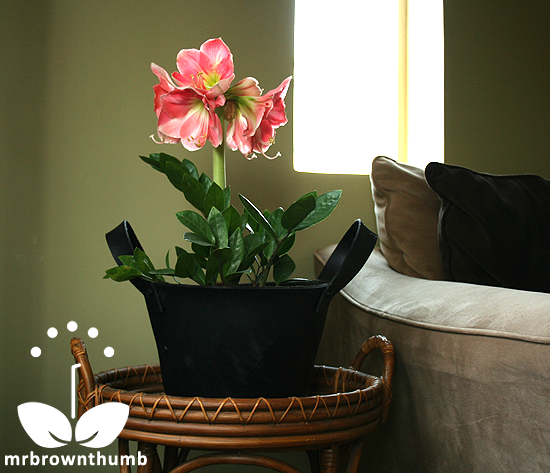Planters from discarded tires aren't anything knew in the gardening world. When I was a kid my best friend’s mom had a container garden in the parkway, hell strip for those of you gardening outside Chicago, made from old car tires. They were there for years before I paid any attention to them aside from thinking they were ugly or the occasional attempts to tip them over. One Earth Day we had a presentation at school on recycling and the speaker showed us how flat tires are repurposed and kept out of landfills by gardeners who turned them into container gardens. It was as if someone had flipped a switch in my head and I started noticing garden pots from recycled tires all over the place. The planters didn't seem to ugly to me after that.
▼
26.4.11
15.4.11
Colored Plant Labels Make Planting Easier
One of the downsides, if it can be called that, about gardening is the obsession that can result from growing a single flower. For example, when I grew Zinnia ‘Green Envy’ I thought it would be the only Zinnia I would ever need. I quickly discovered that it would not be the case and every year I try a couple of new Zinnias, just to see. ‘Green Envy’ is still my first Zinnia love, but sometimes a gardener has to see what options are available to him. The problem arises when you try growing several cultivars and while planting them in the garden you discover that you forget which one is which. When plants are at the seedling stage, it can be rather difficult to tell them apart. I encountered this problem last year when I planned to sow seeds for Zinnia elegans “Green Envy,’ ‘Polar Bear and ‘California Giant.’ I did not want to create many homemade plant labels and spend an hour writing out the names. One afternoon while playing with the nephew it hit me: make color-coded plant labels and use them to keep track of the cultivars I was growing.
11.4.11
Make a Seed Organizer to Store Your Seed Collection
Like many gardeners I have a seed collection scattered among drawers, boxes, envelopes, seed banks. Sometimes I come across seeds I forgot I had and oftentimes I find them after the seed sowing window has closed for the gardening season. This year I’ve decided to try to be more thoughtful about what I plant and have made myself a seed organizer to file away my seed packs. With this seed organizer I know where the seeds are when I’m looking for them, I’ve categorized them in a way that makes sense to me, and when I’m done I can just place the seed packs back in the organizer until I need them again. The best part is that the seed organizer cost me $2.00 to make.
4.4.11
Testing Soil Quality by Growing Radishes
Have you ever heard of the phrase "canary in a coalmine?” Coal miners used to take canaries into coal mines where they acted as early-warning signals for toxic gases or fumes. If the birds became sick, or died, miners would have quality of the air they were breathing. You can do something similar to test the quality of your garden’s soil by growing radishes. While growing radishes to test your garden soil will not give you any insight into toxins located in soil, this experiment can give you insight into what is lacking in your garden’s soil thus saving you time, money and a lot of heartache before you begin planting.




